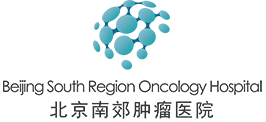GT101 is an autologous cell therapy made of expanded and rejuvenated TIL from the patient’s own tumor. The therapy is administered by harvesting tumor tissue from patients and extracting TIL. The extracted TIL will then be scaled up using Grit Bio’s proprietary manufacturing platform StemTexp® and infused back into the patients to fight tumors.
At the 2024 American Society of Clinical Oncology Annual Meeting (ASCO),reported data on 14 solid tumor patients participating in the GT101 study.The trial was designed with the primary endpoint on evaluating DLT and characterizing the safety profile of GT101 in solid tumor patients measured by the incidence of Grade ≥ 3 treatment-emergent adverse events (TEAEs). The secondary endpoints were to assess efficacy parameters including overall response rate (ORR), disease control rate (DCR), progression-free survival (PFS), duration of response (DOR), and overall survival (OS) according to RECIST v1.1.
Results: As of November 10, 2023, a cohort of 14 patients received treatment with a median age of 46.9 and a median of 2.6 lines of prior therapies. Following a standard FC-based lymphodepletion, patients underwent GT101 infusion at doses ≥ 5×109 cells with median dose of 3.7×1010 cells, followed by high-dose IL-2 administration. Most of observed Grade ≥ 3 AEs were related to the FC conditioning regimen and IL-2, including decreased lymphocyte count, decreased white blood cell count, decreased neutrophil count, anemia, pyrexia and decreased platelet count. The majority of these AEs were recovered within 14 days, while a few were downgraded to ≤ Grade 2 within 4 weeks. Among 14 enrolled patients across various indications (small-cell-lung cancer, melanoma, cervical cancer), the ORR was 35.7%. Specifically, 4 pts (28.6%) had a confirmed partial response (PR), 1 pt (7.1 %) achieved complete response (CR), and 8 pts (57.1 %) had stable disease (SD) as their best response. One pt had unconfirmed disease progression (PD). Notably, among 11/14 patients with cervical cancer, the ORR was 45.5% (5/11) with 4 pts (36.4%) achieving PR and 1 pt (9.1 %) achieving CR. Disease control was observed in 10/11 pts (90.9%), and the median PFS was 4.2 months for this cohort. The CR patient underwent a long-term follow-up and the duration of CR and PFS (estimated by Kaplan-Meier) was 24 weeks and 36 weeks, respectively. Post GT101 infusion, T cell expanded robustly in the peripheral blood of all patients with median Tmax 6.83 days and average 15.9 days.
Conclusions: In the GT101 Phase 1 study, no treatment-related SAEs and DLT were observed. In patients with heavily pretreated advanced or metastatic solid tumors, GT101 exhibited a manageable safety profile under the treatment protocol of lymphodepletion and high-dose IL-2 and a favorable clinical profile, particularly in cervical cancer, with an encouraging ORR and sustained response duration.
At present, there are still many clinical trials of new anti-cancer technologies in China seeking patients. Consultation on new drugs and technologies, you can contact Beijing South Region Oncology Hospital International Department.
Phone Number:4008803716
Email:myimmnet@163.com
References
1.https://www.grit-bio.com/newsinfo/4620292.html
2.https://ascopubs.org/doi/10.1200/JCO.2024.42.16_suppl.2548
Post time: Dec-20-2024
